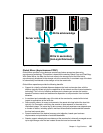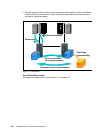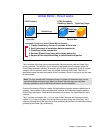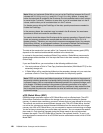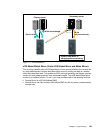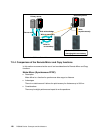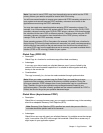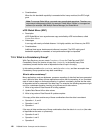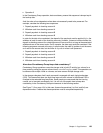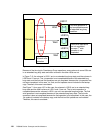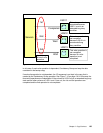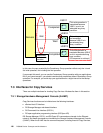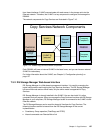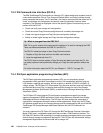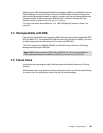Chapter 7. Copy Services 133
Operation 3
In the Consistency Group operation,
data consistency means this sequence is always kept in
the backup data.
And, the order of non-dependent writes does not necessarily need to be preserved. For
example, consider the following two sequences:
1. Deposit paycheck in checking account A
2. Withdraw cash from checking account A
3. Deposit paycheck in checking account B
4. Withdraw cash from checking account B
In order for the data to be consistent, the deposit of the paycheck must be applied
before the
withdraw of cash for each of the checking accounts. However, it does not matter whether the
deposit to checking account A or checking account B occurred first, as long as the associated
withdrawals are in the correct order. So for example, the data copy would be consistent if the
following sequence occurred at the copy. In other words, the order of updates is not the same
as it was for the source data, but the order of
dependent writes is still preserved.
1. Deposit paycheck in checking account B
2. Deposit paycheck in checking account A
3. Withdraw cash from checking account B
4. WIthdraw cash from checking account A
How does Consistency Group keep data consistency?
Consistency Group operations cause the storage units to hold I/O activity to a volume for a
time period by putting the source volume into an
extended long busy state. This operation can
be done across multiple LUNs or volumes, and even across multiple storage units.
In the storage subsystem itself, each command is managed with each logical subsystem
(LSS). This means that there are slight time lags until each volume in the different LSS is
changed to the extended long busy state. Some people are concerned that the time lag
causes you to lose data consistency, but, it is not true. We explain how to keep data
consistency in the Consistency Group environments in the following section.
See Figure 7-13 on page 134. In this case, three write operations (1st, 2nd, and 3rd) are
dependent writes. It means that these operations must be completed sequentially.



